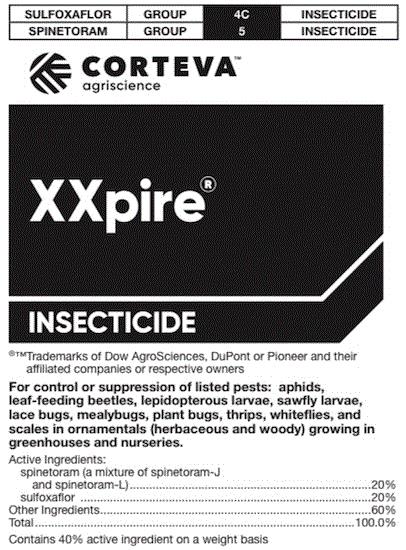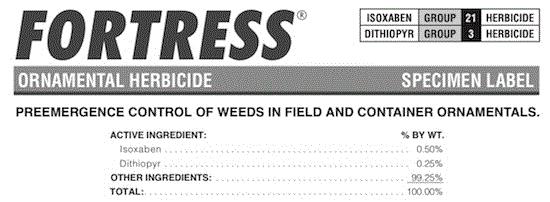Bayer will not leave glyphosate behind
My wife and I, along with our menagerie of animals, are swamp people. We don't have a television at home, which is just as well. When I’m on the road doing extension programs and staying at a hotel, I often do television channel surfing until much later than I need to be. I didn't list “not surf television channels until midnight” as my New Year’s resolution because, let’s be real, I’ll keep doing it.
I often find a lot of advertisements urging people to join class-action lawsuits against Monsanto (now part of Bayer AG) for the health damage done by glyphosate. I’m amazed how lawsuits continue to snowball even when regulators have concluded that glyphosate is unlikely to pose a human cancer risk, and not expected to pose health and environmental risks when used according to label directions. I guess that’s just a sign of mistrust of big corporations and government.
Bayer AG estimated that more than 42,000 people had filed lawsuits alleging cancers caused by glyphosate, and the company is currently appealing three court decisions. Lisa Safarian, who heads the commercial operations of the Bayer Crop Science division, told Politico’s Morning Agriculture in early January that Bayer AG stands behind the safety of glyphosate. Bayer AG will also invest more than $6 billion over the next decade developing alternatives to glyphosate.

Corteva says goodbye to chlorpyrifos
Corteva Agriscience, on the other hand, announced on February 6 that it will stop producing chlorpyrifos by the end of this year. For those of you who do not follow the goings-on of agribusiness, Corteva is an independent agrochemical and seed spin-off from the Dow-DuPont merger. Chlorpyrifos, better known as Dursban in our industry, is part of the portfolio Corteva received from Dow.
Chlorpyrifos is an organophosphate insecticide and has been around for a very long time. Dow filed the first patent in 1966. I’ve seen a steady decline in the use of Dursban in our industry, with the most common use as preventive or curative treatment of field-grown trees against borers. In agronomic crops however, chlorpyrifos (as Lorsban) is a big player. In 2007, chlorpyrifos was the 14th most commonly used pesticide. According to the United States Geological Survey (USGS), which tracked certain agrochemical uses that can impact water quality, almost 5 million pounds of chlorpyrifos (active ingredient only) was used in 2016, and it was most heavily used on corn, soybeans, orchards and grapes. The same USGS survey also reported a steady decline of chlorpyrifos use over the years.
Areas where chlorpyrifos is most heavily used, and the amount of active ingredient applied in 1992-2016. (Source: US Geological Survey)
Similar to glyphosate, chlorpyrifos has had its fair share of drama. As early as 2007, environmental groups had pushed the EPA to ban chlorpyrifos, citing negative effects on children (low birth weight, reduced mental development, etc.) and wildlife (highly toxic to bees and aquatic organisms). Despite objections from Dow, the EPA revoked all tolerance for chlorpyrifos in 2015, essentially banning the insecticide. In 2017, however, EPA Administrator Scott Pruitt overturned the 2015 revocation and denied the petition to ban chlorpyrifos. The Court of Appeals for the Ninth Circuit ordered the EPA to ban chlorpyrifos in 2018. While the EPA overturned its own revocation decision in 2017 and appealed the court order in 2018, regulations in Europe and other countries continue to tighten.
For Corteva, the writing is on the wall. All the lawsuits, reviews and regulations aside, sales of chlorpyrifos have been down over the years—the $350 million the agrochemical industry made from chlorpyrifos in 2005 was 45% lower than the sales figures from 1990. Corteva’s (previously Dow's) share of the sales of chlorpyrifos is also down because of competition from generic versions and because growers are switching to other insecticides.

Welcome back, XXpire?
As we bid Dursban farewell, we say, “Good seeing you again,” to XXpire.
XXpire is an insecticide with two active ingredients—sulfoxaflor and spinetoram—in a combination product. Sulfoxaflor is classified by the Insecticide Resistance Action Committee (IRAC) as a Group 4C insecticide, with the same mode of action as neonicotinoids and flupyradifurone. Spinetoram, classified as Group 5, has the same mode of action as spinosad. XXpire was originally introduced by Dow, and is now with Corteva.
I’m sure it isn’t Corteva’s intention to create “storied” products, but it sure inherited some interesting ones from Dow. XXpire was originally introduced to the ornamentals market in 2014. But soon after its introduction, the neonicotinoid-bee controversy hit the fan. Environmental groups sued to ban one of XXpire’s active ingredients, sulfoxaflor, because of its similarity to neonicotinoids and concerns over its adverse effects on bees. The EPA pulled all sulfoxaflor registrations in late 2015, abiding a federal appeal court order to conduct a more thorough review of sulfoxaflor’s environmental impacts.
A year after pulling all registrations, the EPA began to allow restricted uses or emergency exemptions for sulfoxaflor. In July 2019, the EPA concluded that the proposed uses of sulfoxaflor pose “no unreasonable adverse effects to honey bees.” A new label for XXpire was approved by the EPA in November 2019.

I’d heard at Cultivate’19 that XXpire was coming back. Since then, several of you had asked me about the fate of XXpire, most recently during a webinar on pollinator protection hosted by the American Floral Endowment and during my visits with several growers near and around Omaha, Nebraska, last month. I’d always answered, “Yes, I heard it’s coming back, but I’ll wait 'til Corteva makes an official announcement before I’ll believe it.”
The inquiries did make me check out Corteva’s XXpire. Currently, 36 states have approved the state registrations of XXpire, and some distributors already have the product in stock. I figure it’s just a matter of time before Corteva makes the announcement since the company already has an EPA-approved label on hand. Perhaps Corteva is just waiting for more state registrations to come in before making the big announcement.
You can download a copy of the XXpire label on the product’s website. XXpire is registered for spraying on ornamentals grown in greenhouses and nurseries. No uses on edible crops or transplants are allowed. Target pests include aphids, leaf-feeding beetles, caterpillars, sawfly larvae, shore fly, mealybugs, scales (suppression), whiteflies, lace bug, lygus bugs, thrips, gall midge and spider mites (results variable on mites). REI is 12 hours, and PPE includes overalls, chemical-resistant gloves, shoes and socks.
I evaluated XXpire against several pests (thrips, redheaded flea beetle and more) when it was first introduced in 2014. I was quite pleased with the efficacy of XXpire on some pests. I’ll share the data with you along with the official announcement of XXpire reintroduction, hopefully soon. (I know, not sharing with you now is just mean. But, I have to dangle the bait so you’ll keep coming back to this newsletter!)

OHP receives CA registrations for Pedestal and Fortress
OHP announced in late January that its Pedestal insecticide and Fortress herbicide have received California state registrations and are available from authorized distributors.
Fortress is a pre-emergent granular herbicide, containing two active ingredients—isoxaben (WSSA Group 21) and dithiopyr (WSSA Group 3). You may be more familiar with isoxaben as Gallery herbicide, which is used for pre-emergent control of broadleaf weeds, and dithiopyr as Dimension herbicide, which is used for pre-emergent control of grassy weeds. The combination of isoxaben and dithiopyr in Fortress allows this herbicide to achieve pre-emergent control of a broad range of broadleaf and grassy weeds, such as bittercress, spurge and crabgrass. According to Joe Neal of North Carolina State University, Fortress is weak on dogfennel, eclipta, phyllanthus, doveweed, morning glory and rice flat sedge, and does not work against nutsedges.

Fortress is registered for container and field nurseries. The use rate of Fortress is 3.4 lbs. per 1,000 sq. ft. or 150 lbs. per acre. Reapplication may be needed every three months during the growing season. Fortress should not be applied until the medium in the containers has settled. New plantings should be irrigated with water, and allow medium to settle before application. For established container crops, hand weeding is necessary before application. Also, water with ½ inch after application to activate the herbicide. REI is 12 hours, and PPE includes overalls, chemical-resistant gloves, shoes and socks.
Pedestal is an insect growth regulator registered for use against caterpillars, leafminers, thrips, whiteflies, and plant and lygus bugs on ornamentals in greenhouses and nurseries, and on tomatoes in greenhouses. The active ingredient of Pedestal, novaluron (Group 15), has been around for some time. OHP updated the packaging, EPA registration number and product code of Pedestal in mid-2019. (See my newsletter about that by clicking here.)

Since Pedestal is an insect growth regulator, this product is most effective when used against immature insects. Management of an established pest population with mixed life stages may require tank mixing with another insecticide with activity against adults. Use rate is 6-12 fl. oz. per acre. No more than two applications may be made per crop per year, and no more than 52 fl. oz. may be used per acre per crop season. Pedestal cannot be used on poinsettia. REI is 12 hours, and PPE includes overalls, chemical-resistant gloves, shoes and socks.





See y'all next time!

JC Chong
Professor of Entomology at Clemson University
This e-mail received by 22,731 subscribers like you!
If you're interested in advertising on PestTalks contact Kim Brown ASAP!